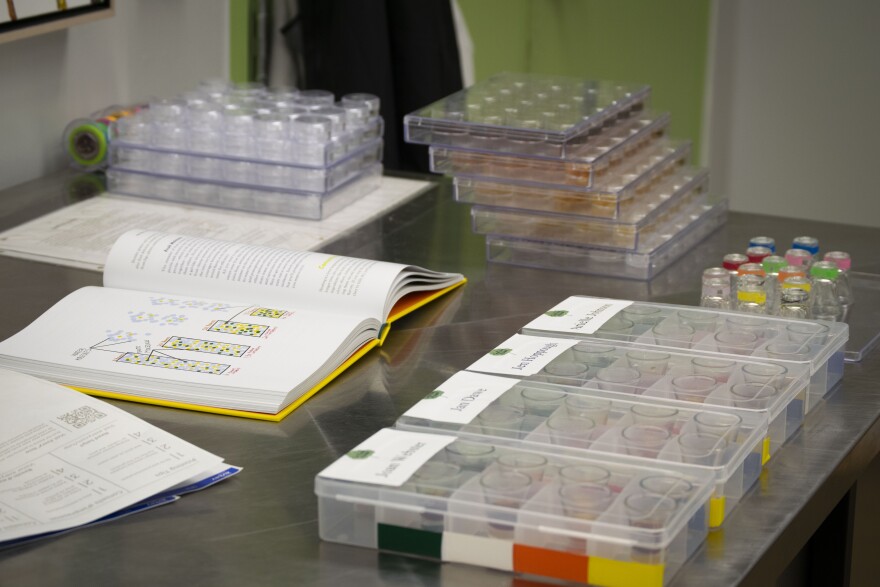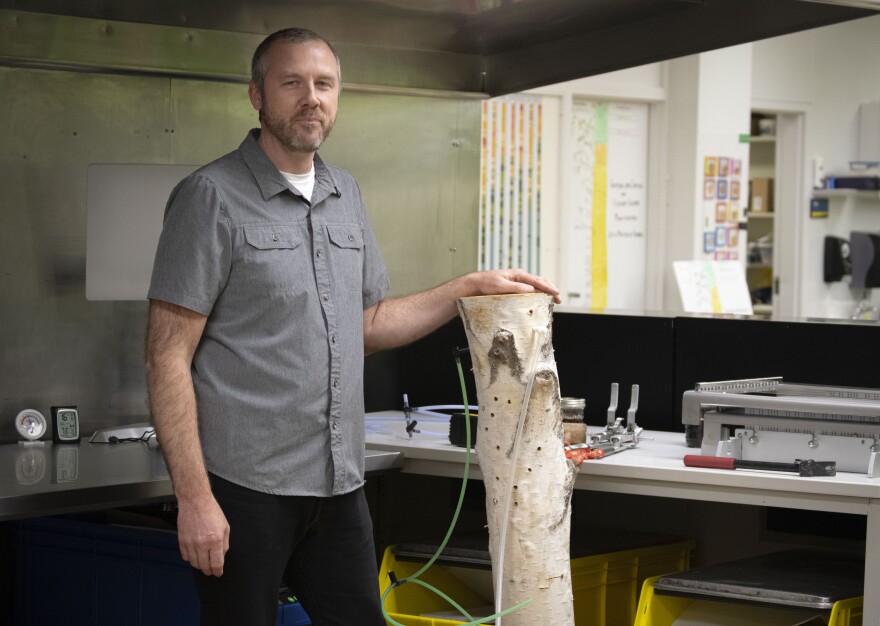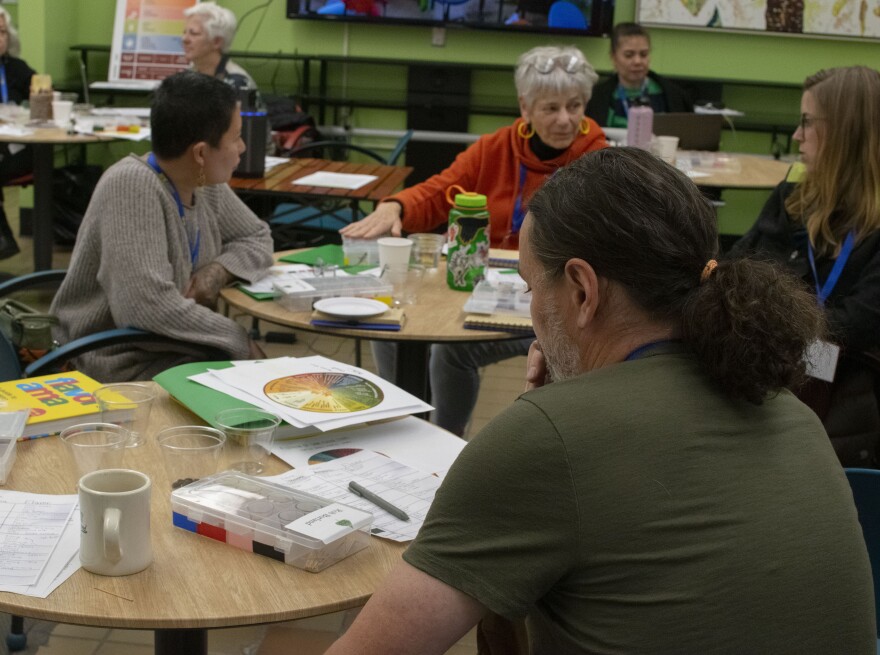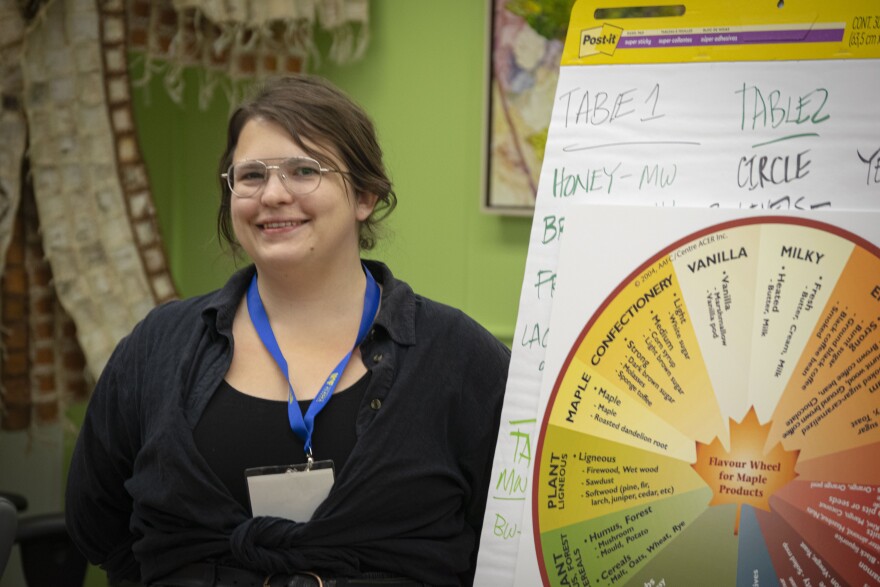If you’ve ever been to a wine tasting, you’ve probably seen people swish sips of it in their mouths to evaluate the flavor. In a University of Alaska Fairbanks test kitchen, that’s exactly what food scientist Arielle Johnson did with a small glass of birch syrup.
“It’s obviously sweet, because it’s a syrup,” she said, smacking her lips, and then holding the glass of amber liquid up to the light. “There's a lot of tanginess. I also get caramel flavors, some molasses — but also this really nice cooked, candied raspberry note.”

Johnson is a flavor expert who flew to Fairbanks from New York to help guide a flavor profile workshop for birch syrup. She’s a frequent guest on science and cooking programs, where she talks about her research on food culture and chemistry. Her new book on those subjects, Flavorama, just got nominated for a James Beard award.
When most people reach for something to pour over their pancakes, they’re thinking: maple. But sugar maples don’t grow in Interior Alaska. That leaves birch trees to provide their unique sap for a growing alternative syrup industry.
Tree tappers, chefs and scientists got together in Fairbanks on Sept. 28 to work on a flavor wheel for birch syrup. Under Johnson’s instruction, they found out that there’s more to the sticky liquid than just its sweetness. Attendees identified notes like buckwheat, dark chocolate, orange peels — cheese, even.
The workshop was put on by a program called OneTree Alaska, an affiliate of the university’s Agricultural and Forestry Experiment Station that’s entirely focused on birch trees — from their life cycle to their place in Alaskan culture to their commercial use. Last year, the program got a $100,000 grant from the U.S. Department of Agriculture to try to capture the flavor of the Interior.

Workshop attendee Teri Gross grew up tapping birch with her family, and now she’s a restaurateur in Fairbanks. She loaned her tastebuds to help describe the variety of syrup flavors.
“We live in a really special place, with all these trees.” Gross said. “The syrup is something that you can't have year-round. It's very specific to this place and the time that you can get it.”

Some of those flavors trickle far beyond the realm of the expected. Program chefs served up a funky, savory birch syrup over brussel sprouts, which attendees gobbled up within the first few hours of the workshop. Other items at the buffet table were a little more conventionally sweet, like panna cotta with birch caramel.
OneTree Alaska Program Lead Jan Dawe said that over the last year, her team has observed how different conditions change the flavor of the sap.
“Sometimes, with the differences that we would think of as being negative — not as much sun, cooler soils — the trees aren't at a disadvantage,” she said. “And they're producing more complex-tasting syrups.”
Part of the idea behind the project is to support better ways to process and market birch syrup to stimulate the local economy. Jennifer Hoppough, UAF’s chief of faculty affairs, said some of the most important work ahead of the group is to find the right vocabulary to help bring birch syrup to more tables.
“Even the particular day and time that you extract that sap actually influences that flavor — that’s the story for that particular day,” she said. “OneTree is at the heart of that storytelling.”
She says, if you look at it that way, the group is trying to speak for those trees — bottling up the moment they were tapped and creating a taste that people will remember.


